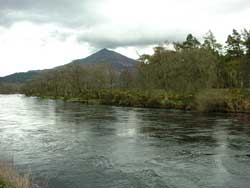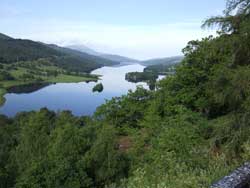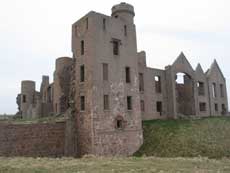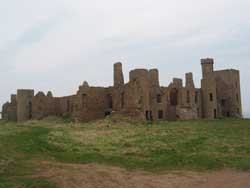It is an easily accessible place to visit Located approximately 23 miles north of the city of Aberdeen. and can be reached from Cruden Bay Village or by driving to a car park at a bend on the A975.
There are, confusingly, two Slains Castles on this stretch of coast. The original lay a mile north east of Collieston and about six miles south west of its successor. This was built in the 1200s as a fortress. But in 1594 the owner, the Earl of Erroll backed a plot by the Earl of Huntly against King James VI. In retribution for the Hays involvement in the Roman Catholic/Spanish plot known as the 'Treaty of the Spanish Blanks'. Allegedly signed by Hay Earl of Erroll, Gordon of Huntly and the 'Red' Douglas Earl of Angus. Such political/religious plots had simmered away for years from 1585 to the arrival of the Spanish Armada in Scotland in 1588,and then on to the battle of Glenlivet in 1594,not far from the Gordon stronghold of Auchendoun. Where the forces of Francis Hay, 9th Earl of Erroll and George Gordon 6th Earl of Huntly routed the Campbells of Argyll and the MacLeans who were fighting on behalf of King James VI. Francis himself was wounded in the leg by a MacLean arrow while leading the mounted charge. As the King marched north personally to besiege Dalgatie and sack Old Slains, Francis fled into exile and only returned to Scotland in 1597. Instead of trying to repair Old Slains he opted to rebuild Bowness castle north of Old Slains and renamed this castle the New Slains. The tower was extended and ranges of buildings were added around a courtyard. In 1664 the castle was again expanded and altered, and a corridor was built across the courtyard. The final major change came in 1836 when further wings were added and the underlying castle was given a granite facing. The front of the ruin lies literally along the edge of the cliffs. To the rear, beyond what were once its gardens, there is a deep cleft that cuts into the cliffs as far as the main access road. |






